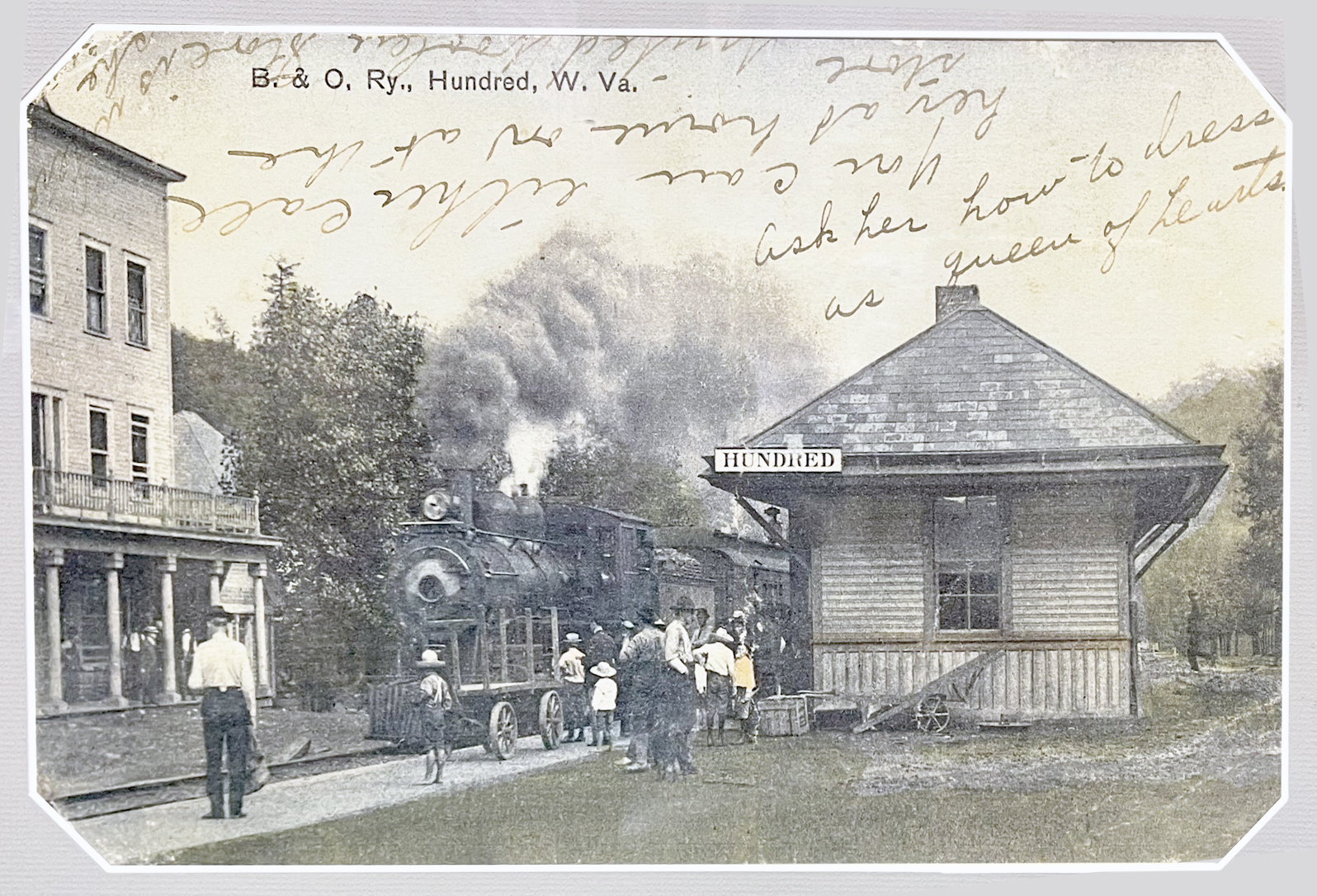I found this old photograph in Hundred Library’s tastefully historic rest room, flanked by a framed sketch of Henry “Old Hundred” Church, the town centurion who waved at the trains as they passed through in the days before the Civil War. Old Hundred’s 109-year timeline is now the stuff of legend, but the Baltimore & Ohio Railroad has its own place in history as the first railroad granted charter in the United States.
It broke ground on July 4, 1828 and when it got to Hundred in 1852, 101 year old Henry and his wife Hanna, 98 were there on their porch to greet the first train. They would continue to make their presence known until their deaths in 1860, a few short months before the Civil War.
It’s a good guess that Henry and Hanna would have heard the news, along with everyone else in town, about abolitionist John Brown and his raiders attacking Harpers Ferry, Virginia the night of October 16, 1859, attempting to seize the federal arsenal and lead a slave rebellion. A B&O bridge leading to the ferry was seized, along with a locomotive, before soldiers arrived within days to overrun the raiders. Brown was tried for treason and hanged on December 2.
The failed raid stoked the political tensions that would lead to war in 1861. The skirmishes, attacks, bombed bridges, and destroyed and stolen trains would continue throughout the war as both sides fought to control the railroad and its telegraph lines that carried Union soldiers, supplies, ammunition, and information to defend Washington D.C. and eventually win the war for Lincoln.
The northern portion of Virginia rebelled and voted against secession in 1861, then sued for statehood. There would be scores of bloody battles over control of the B&O Railroad’s many lines before Union-loving West Virginia was recognized as a state, on June 20, 1863.
A July 8, 1863, a newspaper clipping that Sam Snyder of Fairmont, WV found in the digital archives of the Ohio County Library tells us that “people of Littleton and Burton station having determined on a Pic Nic celebration of the 88th anniversary of our birth as a nation” gathered on the “flat by Etons tunnel a mile east of Littleton.” A bower, 40 by 110 feet and covered with fir boughs laced with flowers was built and although the morning of the 4th was a soaker, by 11 a.m. the sun came out, the excursion train from Cameron came steaming in, Stoy’s band from Waynesburg came to play and neighbors arrived from every hill and valley, with their Pic Nic baskets full, to celebrate the birthday of the United States, including the new state of West Virginia they were now living in.
Many newly appointed state officials spoke that day and “all agreed that our country must stand one and inseparable, under one flag and one destiny.”
Fast forward a few decades and here we are, looking at the Hundred Depot and the folks waiting there for the train to come rolling in.
This crisply detailed old photograph might be a family print, with some scribbles still intact. “Ask her how to dress like the queen of hearts” brings up images of costume parties and happy faces; the colored shirts livening the platform and the tinted buildings and grass are touches someone gave to this frozen moment in time that make it feel like it was only yesterday we saw that plume of smoke roiling as the train pulled out of Hundred.
Take a walk on the old rail bed today and you’ll find it has a nicely finished surface, from the Rt. 7 turn off, following the edge of town past Pennsylvania Avenue, past the new log cabin that Hundred High School students built and installed in 2021 to commemorate Old Hundred’s home place, then out of town along Fish Creek to the Dairy Delight where it trails off into gravel for the journey to Littleton.
And while you’re here enjoying Hundred’s latest transformation of the past, take some snapshots. Imagine how they will look 100 years from now, as new eyes are deciphering the crisp colors of the buildings around you – Miss Blue’s Restaurant, the Americana whimsy of Lori’s Cup of Joe Coffee Cabin, the glint of the Dollar Store in the distance, the rectangular edges of the school buildings across the road. There will be no mistaking the fun the kids are having, roller skating and skateboarding as they share space and good times with bikers, hikers and families with strollers. How about that open sided building with benches where people are relaxing as they watch friends and families play? Something about the shape might remind the historian in some future self that people used to wait for a train along this path, a long, long time ago.
